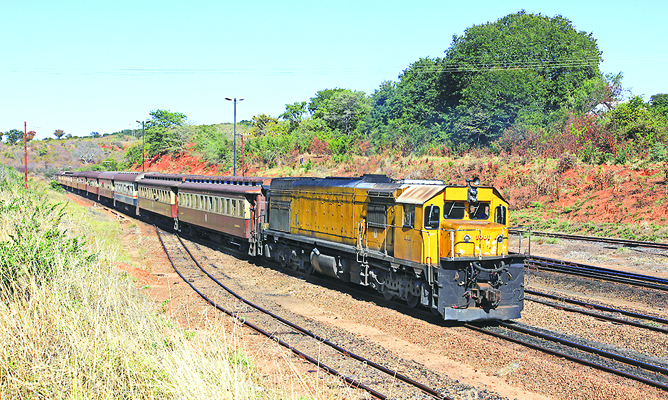NRZ targets US$100 million revenue in 12 months
The National Railways of Zimbabwe (NRZ) is leveraging its extensive real estate and land holdings to generate about US$100 million in revenue by next year, according to management.
While cargo transportation remains a core revenue stream and is expected to grow from US$56 million in 2024 to US$89,1 million in 2025, a key aspect of the revenue growth strategy involves maximising revenue from the previously under-utilised real estate. According to the management, NRZ expects a substantial increase in rentals and leases, from US$6,3 million projected this year to US$10,3 million in 2025 after the national rail operator tackled land barons who were illegally occupying and underpaying rent on their properties.
Despite owning numerous properties across Zimbabwe and beyond, NRZ’s real estate revenue has been hampered by illegal occupancy. Analysts believe the under-utilised asset class holds substantial potential, with the revenue generated potentially funding the company’s infrastructure improvements. The company recovered land in Lochinvar and Mutare, significantly boosting lease revenue — from the equivalent of US$224 964 per month in 2021 to US$666 959 currently.
NRZ has now set its sights on Wollendale Farm, where it holds legal title. To develop a smart city project, the NRZ has secured Government support to relocate the current occupants. The move to unlock the potential of their land is crucial for NRZ’s turnaround plan. Historically, NRZ has faced declining revenue due to aging infrastructure and a shrinking fleet. The cargo volumes have plummeted from 12 million tonnes in the 1990s to a mere 2,3 million tonnes.
Only a fraction of their locomotives is operational, highlighting the need for modernisation. Effectively managing its real estate portfolio alongside cargo transportation growth, could place NRZ on a promising path to financial recovery, some analysts say, and leveraging on their land holdings could be a key pillar in their revival strategy. The route network spanning 2 760 kilometres, has suffered from a maintenance backlog evident in numerous speed restrictions (cautions).
The cautions, totalling 65 and affecting 236km (roughly 9 percent of the network), have decreased slightly from 10 percent the previous year.
However, challenges remain with unstable yards plagued by rotten sleepers contributing to a higher frequency of yard accidents. The management says vandalism targeting steel clips, ballast stone, and mining within the railway right-of-way is worsening maintenance efforts. In line with Vision 2030, NRZ embarked on stabilising the “ship and preventing it from further sinking”.
The strategies for recapitalisation, re-organisation and transformation are aimed at making NRZ a “modern and efficient mode of transporter of choice for both bulk passengers and freight especially with regards to the attainment of the US$12 billion mining industry”. The NRZ adopted a phased approach to its strategic plan covering the period 2020 -2030 aimed to turn around its fortunes and the above initiatives were mainly addressing short-term requirements.
The three phases are intertwined spreading over the strategic horizons namely the short-term, medium-term and long-term. The inefficiencies of the Zimbabwean railway system have created a ripple effect, placing significant strain on the country’s road network. With a decline in freight being transported by rail, there is a corresponding rise in heavy goods vehicles using the roads. The increased traffic load can lead to premature road degradation, requiring more frequent and expensive repairs. The compromised state of roads not only increases transportation costs for businesses but also disrupts travel and commerce, hindering overall economic activity.-chronicle











